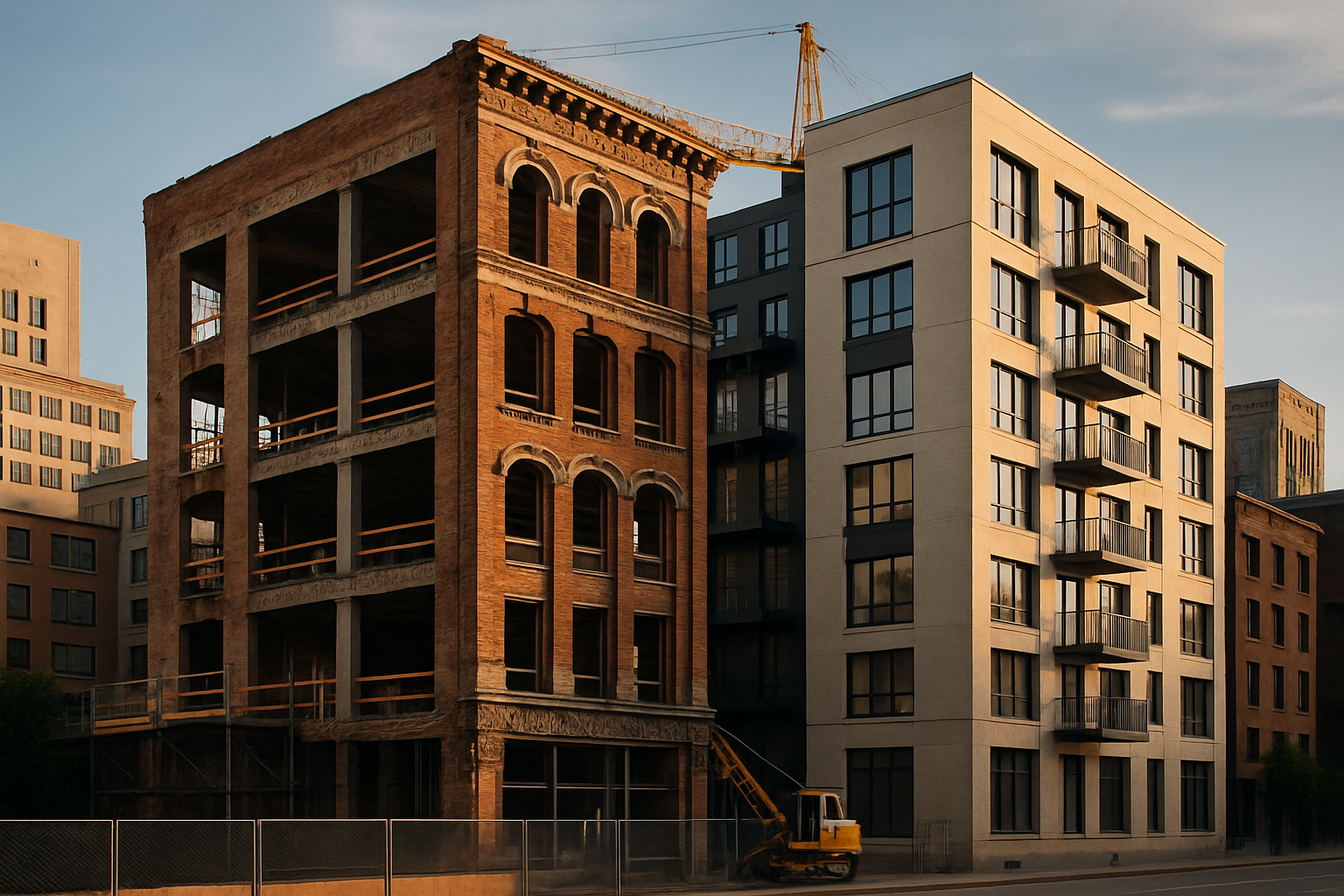Adaptive Reuse: Transforming Industrial Spaces into Residential Gems
In the ever-evolving landscape of real estate, a captivating trend is reshaping urban living: the transformation of industrial buildings into sought-after residential spaces. This innovative approach, known as adaptive reuse, is not only breathing new life into forgotten structures but also redefining the concept of modern urban dwellings. With 73% of millennials expressing a preference for unique living spaces, the conversion of warehouses, factories, and other industrial sites into stylish lofts and apartments is rapidly gaining traction in real estate markets across the globe.

The appeal of industrial-to-residential conversions lies in their unique aesthetic and historical significance. Exposed brick walls, high ceilings, large windows, and original architectural features create a distinctive ambiance that resonates with modern urban dwellers seeking character in their living spaces. These conversions often preserve the industrial heritage of neighborhoods while simultaneously meeting the growing demand for housing in urban centers.
Economic and Environmental Benefits
From a financial perspective, adaptive reuse projects can be highly lucrative for developers and investors. While initial renovation costs may be substantial, the end product often commands premium prices in the real estate market. The National Trust for Historic Preservation reports that adaptive reuse projects can yield a 16% higher return on investment compared to new construction projects.
Moreover, these conversions align with sustainable development practices. By repurposing existing structures, developers can significantly reduce the environmental impact associated with new construction. The U.S. Green Building Council estimates that adaptive reuse projects can reduce energy consumption by up to 50% compared to conventional new buildings of the same size and function.
Challenges in Adaptive Reuse Projects
Despite the numerous advantages, converting industrial spaces into residential units presents unique challenges. Developers must navigate complex zoning regulations, as many industrial areas are not originally zoned for residential use. Obtaining the necessary permits and rezoning approvals can be a time-consuming and costly process.
Additionally, these projects often require extensive remediation efforts to address environmental concerns such as asbestos, lead paint, and soil contamination. The Environmental Protection Agency (EPA) estimates that brownfield remediation costs can range from $100,000 to over $1 million per site, depending on the extent of contamination and the intended use of the property.
Structural modifications to meet modern building codes and residential standards can also be complex and expensive. Developers must carefully balance preserving historical elements with ensuring safety and comfort for future residents. This often involves installing new electrical, plumbing, and HVAC systems while maintaining the building’s original character.
Market Demand and Target Demographics
The demand for converted industrial spaces is particularly strong among young professionals and creative individuals who value unique living environments. A survey conducted by the Urban Land Institute found that 61% of millennials prefer living in mixed-use communities that offer a blend of housing, retail, and office spaces – a characteristic often found in redeveloped industrial areas.
Empty nesters and downsizers are another demographic drawn to these properties, attracted by the low-maintenance lifestyle and proximity to urban amenities. The National Association of Realtors reports that 51% of baby boomers prefer walkable communities, making converted industrial lofts in city centers an appealing option for this demographic.
Impact on Neighborhood Revitalization
Adaptive reuse projects can serve as catalysts for broader neighborhood revitalization. By bringing new residents and businesses to formerly industrial areas, these conversions can spark economic growth and community development. A study by the Preservation Green Lab found that neighborhoods with a mix of older, smaller buildings and new development outperform districts with larger, newer structures in terms of economic and social vitality.
These projects often attract a diverse mix of residents, fostering vibrant, mixed-income communities. As industrial-to-residential conversions gain popularity, they can contribute to the creation of walkable, sustainable urban neighborhoods that align with modern city planning goals.
Future Outlook and Investment Potential
As urban populations continue to grow and housing demands increase, the trend of adaptive reuse is likely to accelerate. The Urban Land Institute predicts that by 2030, up to 25% of existing commercial real estate could be repurposed for other uses, with residential conversions being a significant portion of this shift.
For investors, this trend presents unique opportunities. While these projects may require higher initial investments, they often yield strong returns due to their unique appeal and prime locations. As cities continue to evolve, properties that blend historical character with modern amenities are likely to remain in high demand, potentially offering long-term value appreciation.
In conclusion, the transformation of industrial spaces into residential properties represents a dynamic and promising sector of the real estate market. By combining historical preservation with modern living standards, these projects not only meet the housing needs of urban populations but also contribute to sustainable urban development. As this trend continues to evolve, it will undoubtedly play a significant role in shaping the future of urban living and real estate investment strategies.




